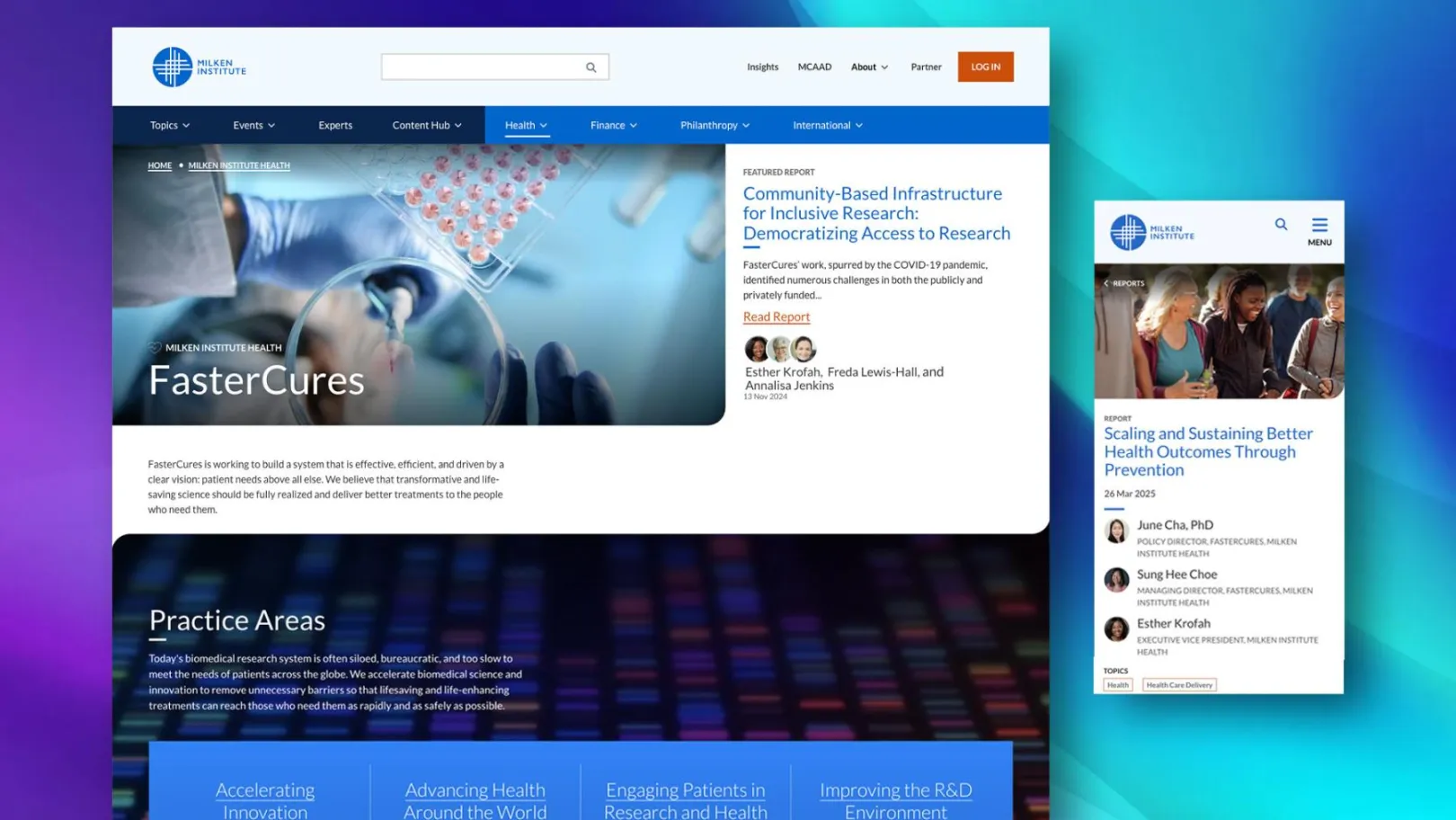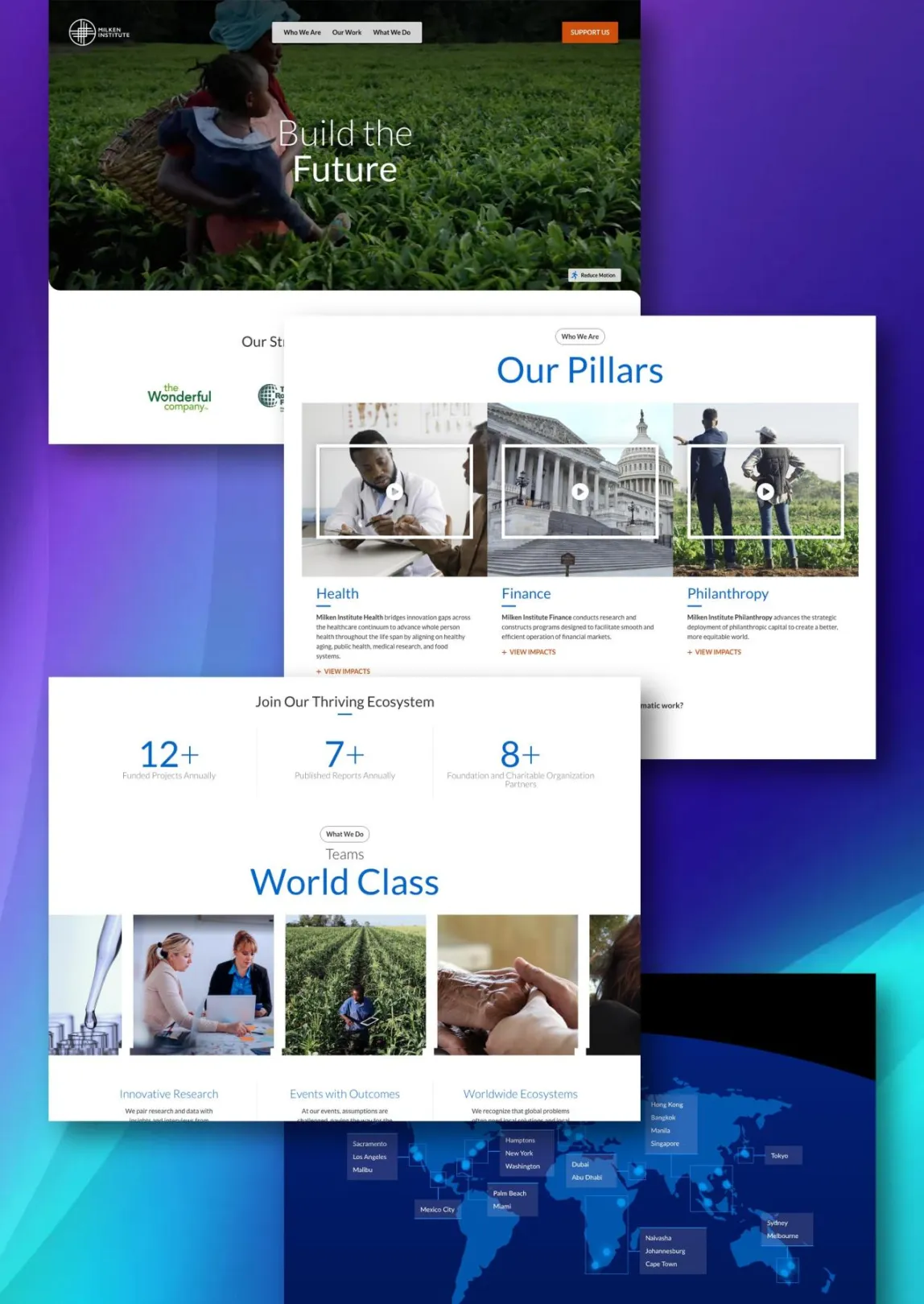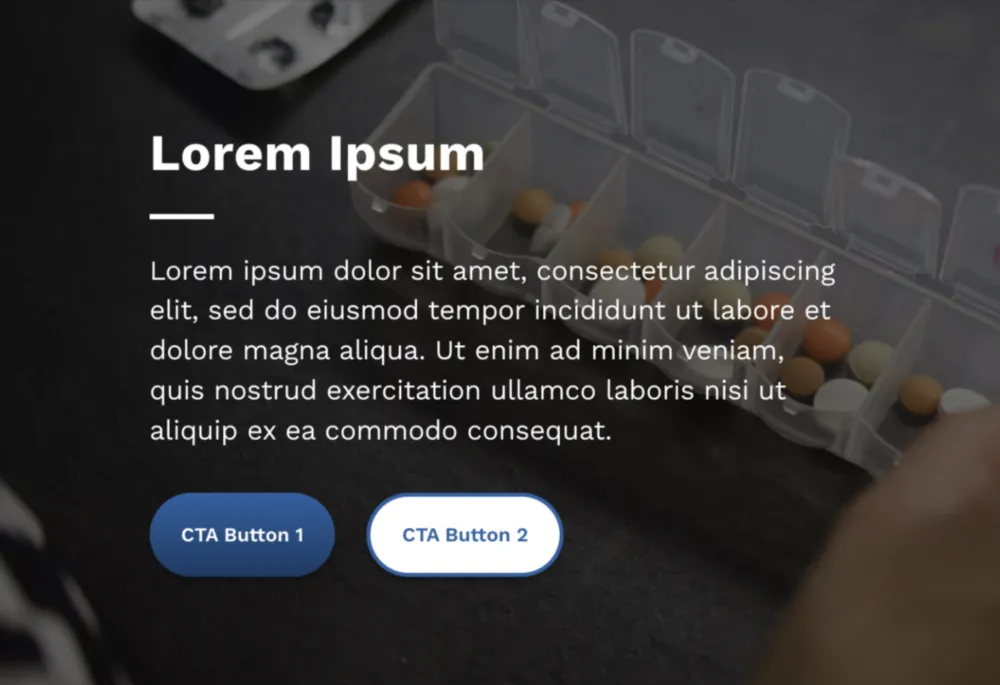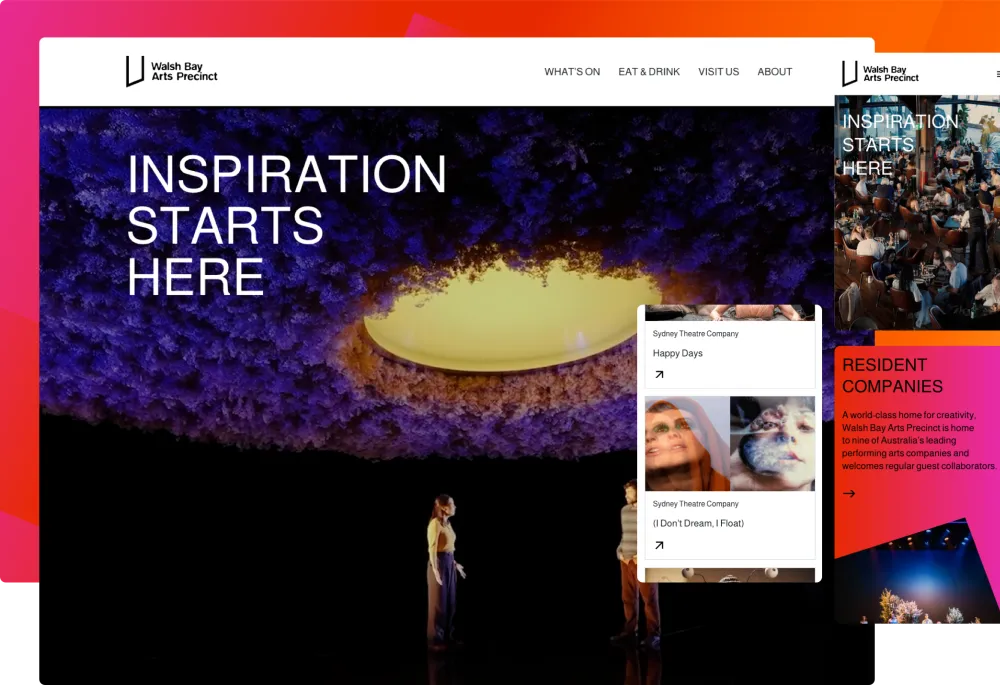Sector(s)
Team Members
Milken Institute is a global nonprofit, economic think-tank tackling some of the world’s most pressing challenges through key partnerships, groundbreaking research, and exclusive events.
Back to topThe Opportunity
The Milken Institute had recently reorganized its programming under three main pillars: health, finance, and philanthropy, and internal stakeholders looked to increase engagement with its critically important research, publications, and event sessions. Our goals included:
- Better articulate who they are and what they do
- Improve visitor engagement by serving up related content to match users’ expectations
- Provide stronger conversion opportunities
- Improve site performance and reliability
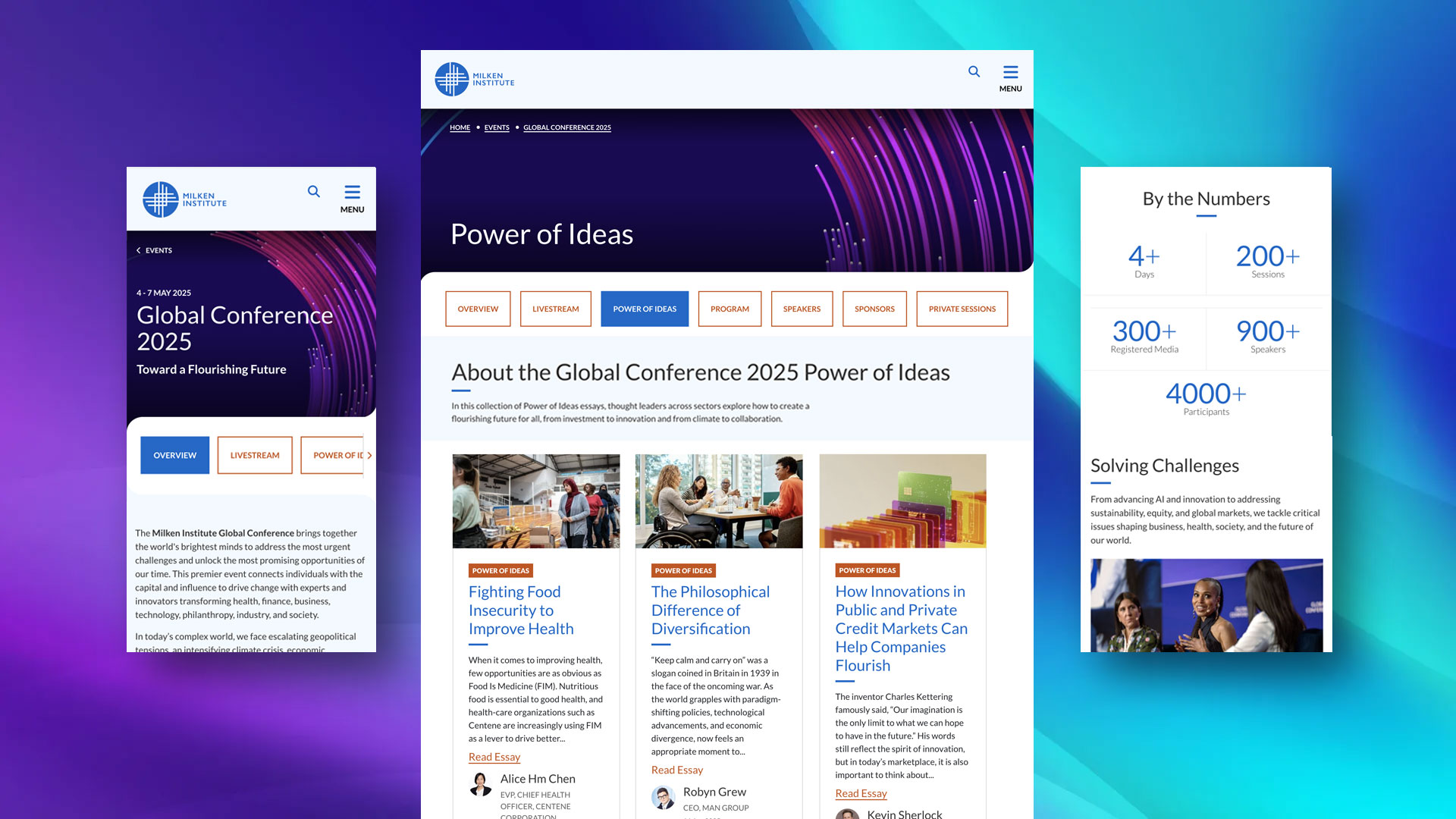
Our Approach
Discovery and Research
Through stakeholder workshops and 1:1 user interviews, we heard how users interact with content on the website, what met their expectations, what did not, and what might help them engage more deeply with the content. Sandstorm created a rich set of personas to use as our guide for information architecture and user experience strategy.
Information Architecture
These led us to create the bifurcated navigation: on the left, published content organized by topic and type; and on the right, the pillars, research areas, and programs that make up the Institute. This approach addressed a frequent conflict in goals that arose as part of the strategic website design: presenting content the way users expect to find it vs presenting content the way the internal teams think about it.
Once users got to the site, we also needed to keep them engaged by not creating “dead ends”. Whether browsing by topic or coming directly to a particular report or another piece of research from a newsletter, we needed to serve up additional relevant content wherever they landed. Specific display settings allowed us to tailor the related content based on the page type and how broad or narrow the content on that page might be.
Back to topTo help streamline the process for content editors and make use of Drupal’s native content editing features, we optimized the editor experience in the following ways:
- Made the content types more intuitive. We let one content type do the heavy lifting for most of the Content Hub, using taxonomy vocabularies to dictate the format of each piece of content.
- Utilized Layout Builder for flexibility. Establishing a default layout for Layout Builder-enabled pages gave content editors a blueprint for keeping content consistent, but allowed them to make other choices for less standard pages.
- Made important fields and files easier to find. The previous site used media entities to create pages for things like reports, and certain metadata was hidden in fields that required four or more clicks to find. We transformed existing content types to surface reports via automated migration and moved important media like featured images into new fields that are easier to access.
Then, we needed to make sure that users could find what they were looking for. Enter: Search Web Components, a robust Drupal module that makes tailoring facets and filters easy for an optimal search experience. It supports our strategic website design by making user interactions easy to follow and understand as the search results are refined. Facets and filtering help guide users with the following features:
- Only the filters that limit the list appear
- List updates instantly when filters are selected
- Filters are hidden and exposed with “Collapse” and “Show More” options as needed
- Autocomplete dropdowns for long lists (experts, events)
- Number of results indicated and user controls for how many to show
- Context-rich results
The Outcome
The redesigned site achieved substantial improvements in both engagement and usability:
- 119% increase in session duration
- 100% increase in time on page
- 56% increase in average views per session
- 15% increase in engagement rate
Ultimately, the new website not only enhanced discoverability and relevance for users, but also empowered content editors with flexible tools, ensuring consistency and long-term sustainability.
Contact Sandstorm about your project
Back to topWhile the Milken Institute’s existing site had just been upgraded to Drupal 10, we knew that it was not leveraging all of the tools it could to achieve the project goals. For example:
- None of the content types were layout builder-enabled
- Taxonomies were inconsistent and not widely used
- Categorized content was not making use of related content views
- Structured content was only being used for limited areas of the site
These limitations created inefficiencies for content editors and obstacles for users trying to navigate the site’s deep and diverse content library. With this in mind, we saw a clear opportunity to optimize both the editorial experience and user engagement by taking full advantage of Drupal’s native capabilities.
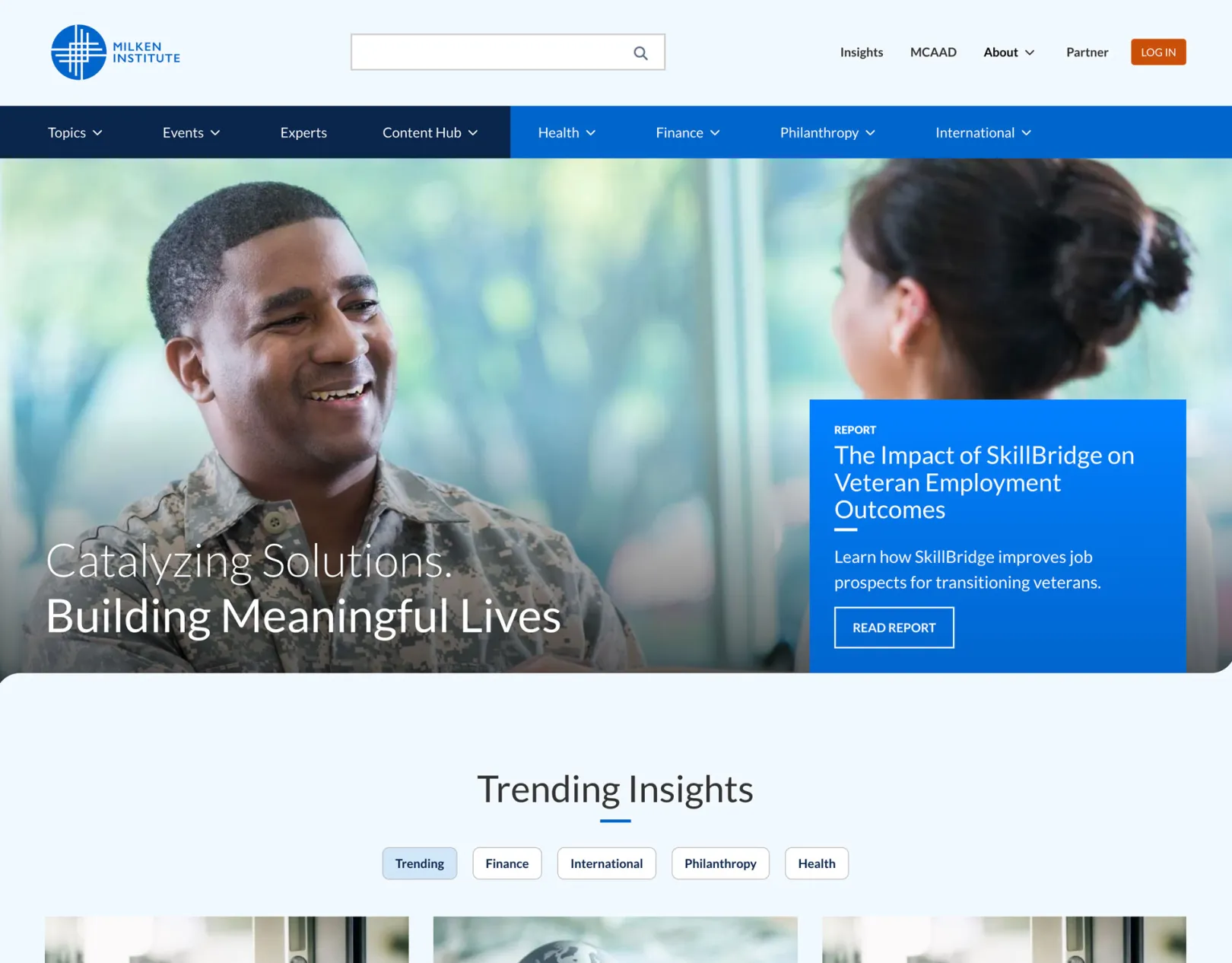
Technical Specifications
Drupal version:
Key modules/theme/distribution used:
Search Web Components is a robust Drupal module that makes tailoring facets and filters easy for an optimal search experience. It supports our design by making user interactions easy to follow and understand as the search results are refined.
